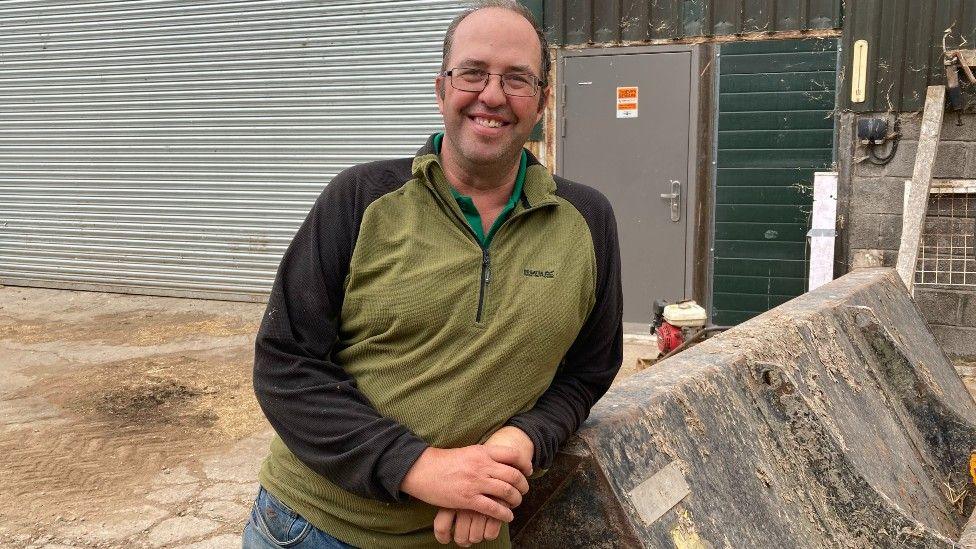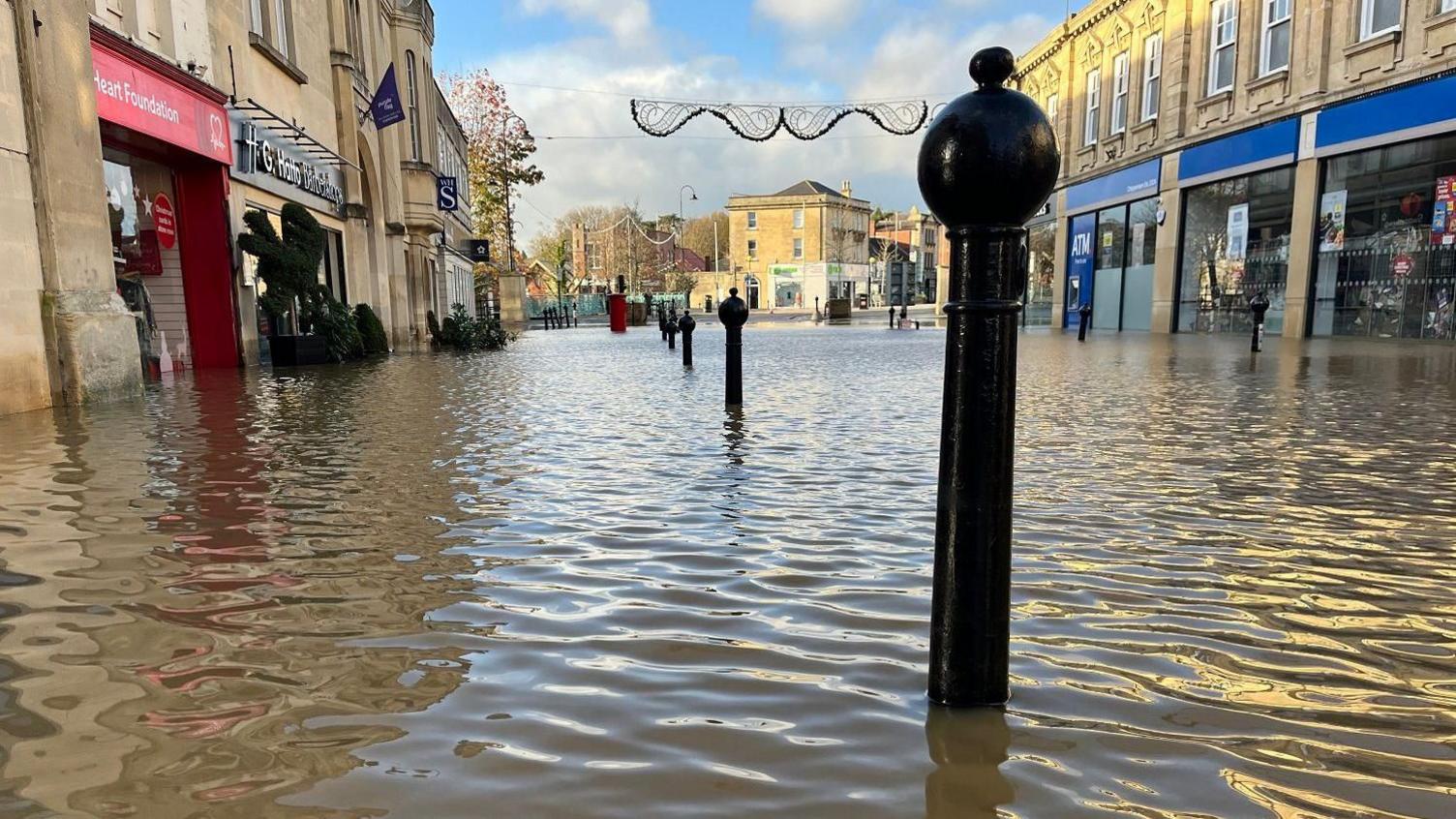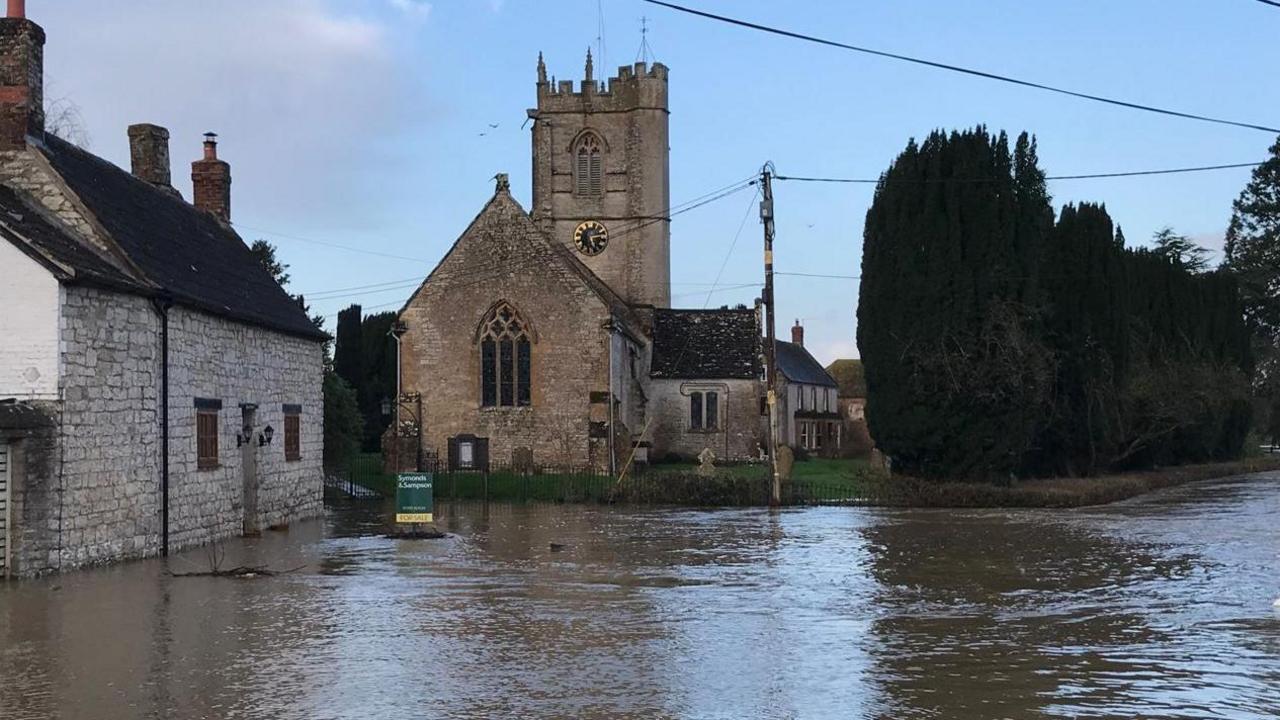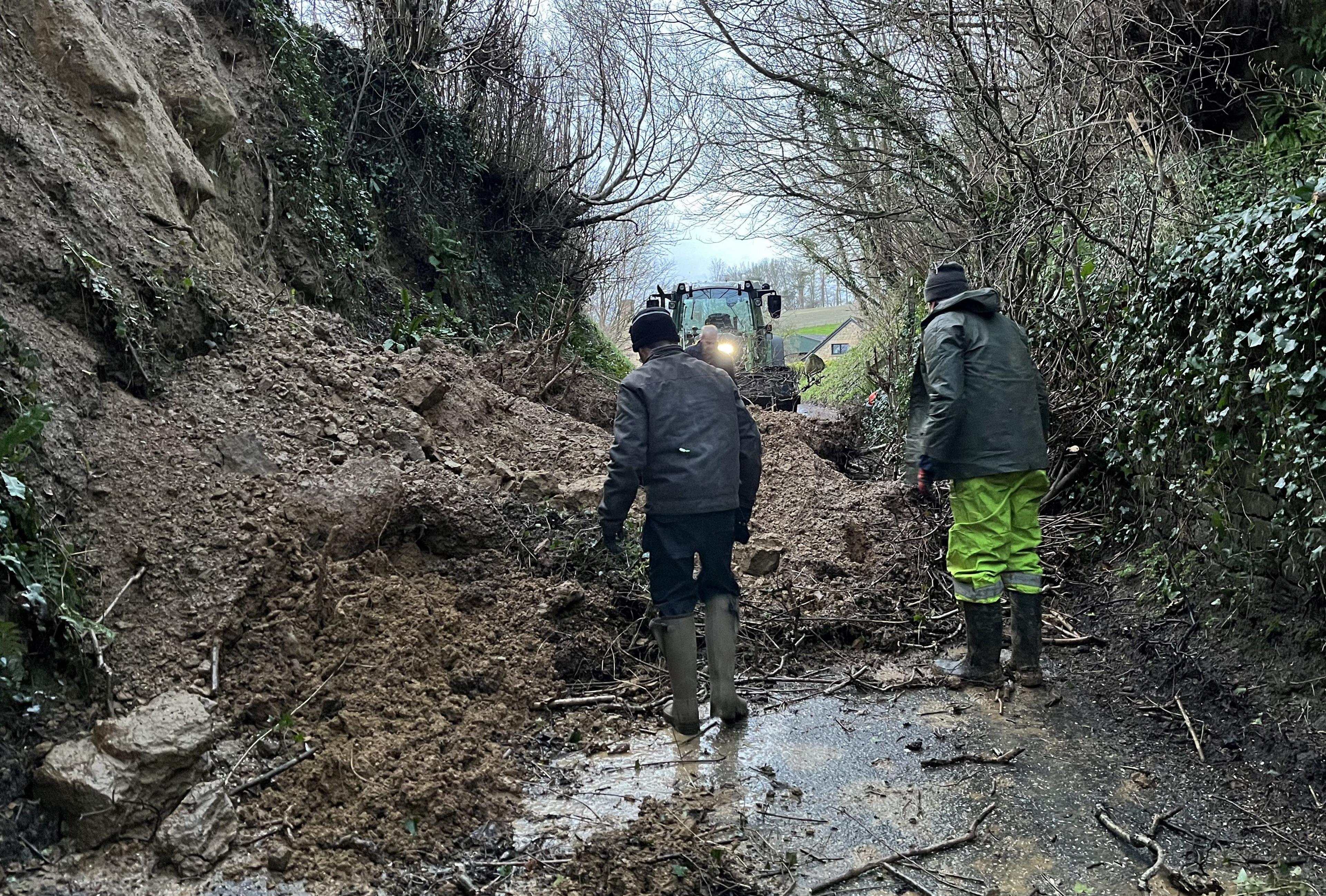'Normal gutters cannot cope with bigger storms'

Jamie Jackson (l) and Lewis Dix say their new deeper gutters are in high demand
- Published
People are fitting deeper gutters on their homes to cope with more intense rainfall caused by a warming climate, according to roofers and a drainage expert.
One firm in Bath said 75% of their clients want the new, double-sized guttering to handle stormwater.
While climate change is prompting complex and often expensive adaptations around the world, roofers point to the bigger gutters as a simple, graphic demonstration of new weather patterns.
"It's the intense downpours that we get these days," said Jamie Jackson, of Jackson and Dix Roofers. "The guttering can't cope like it used to."

A Victorian church hall in Wroughton, nr Swindon, has had new cast iron gutters fitted, twice the size of the old ones
Jamie and his partner Lewis Dix work on expensive, heritage roofing projects around Bath, often using intricate leadwork on old Georgian buildings.
But I met them on an everyday street in Shepton Mallet, Somerset, outside a typical semi-detached house.
The owner had replaced her old tiled roof, and while she was at it, upsized her gutters.
"These are the new ones, they're only 20mm deeper, but they carry twice as much water," explained Lewis.
Somerset has had its share of flash flooding, and often summer storms can bring intense rainfall for short periods.
Mr Dix explained: "The heavy downpours that we get, the high volume of rainwater that's hitting the gutters, the homeowners can see that the gutters can't take the capacity."
His firm are now fitting new gutters to ordinary homes "five or six times a week".
The deeper gutters are not much more expensive, he says, and people usually have the work done while they are re-roofing their house and already have scaffolding up.
But just funnelling the water away only moves the problem downstream, literally.
As heavy storms bring sudden rushes of rainwater, many towns have experienced flooding for the first time.
In November 2024 Chippenham, in Wiltshire, saw its worst floods for 50 years. Much of it was caused by stormwater simply flooding the main sewers in the town before the River Avon burst its banks.
"We need to hold the water here, not just shove it down the drain," explained Nick Orman, a drainage engineer from Wroughton, near Swindon.

Nick Orman helped redesign the new red gutters for the old church hall, to cope with bigger storms in a changing climate
Mr Orman is also a volunteer in his local church hall, which has recently had its Victorian roof replaced. Under his guidance, the church also has shiny new red gutters. As the building is in a conservation area, they are cast iron, and match the heritage of the church.
But they are much bigger.
Still measured in inches, as befits a heritage project, they are three inches deep, instead of two. But hold twice the volume.
When it rains, the gutters carry the water off the roof, but not straight down the drain.
Instead, a 'rainwater garden' has been planted - an area slightly lower than the surrounding car park, planted with small shrubs on layers of soil and gravel that can absorb the water, and then gradually soak it away through the ground.
'Out of date'
Mr Orman has been designing drainage systems for 50 years, and said he has seen the downpours get bigger.
"As the climate warms you get more rainfall in the atmosphere and it comes down faster. They're becoming more frequent as well as more intense."
But, he said, the official guttering standard have not changed with a changing climate.
He said: "It's based on rainfall data from the 1940s to the 1960s. So it's well out of date and we reckon that already you need to add 10% onto those numbers, just for now.
"And then going forward you need to add another 40% on for the period 2050 to 2070."
Flooding quickly gets political. As people see their homes ruined, or their business closed, they are understandably angry and demand action.
Governments and the Environment Agency have pledged new measures.
But right now, as summer draws to a close, many people are choosing to fix their own roofs, and get bigger gutters.
Get in touch
Tell us which stories we should cover in Wiltshire
Follow BBC Wiltshire on Facebook, external, X, external and Instagram, external. Send your story ideas to us on email or via WhatsApp on 0800 313 4630.
Related topics
- Published21 August

- Published25 May

- Published7 April

